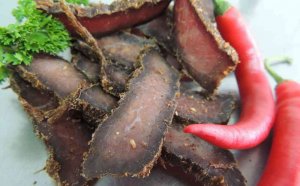
Brazilian Beef cuts
 When I've previously talked about, attempting to untangle the linguistic and culinary nightmare associated with taxonomy of meat slices in Brazil and in united states is no simple matter. To start with, butchers within Brazil and those when you look at the north Hemisphere cannot reduce beef exactly the same way, so a cut cap's preferred in a single area, like picanha in Brazil or Porterhouse in united states, might not occur in various other. Further, you will find regional and regional naming variations on both edges associated with the Equator. However, tastes of Brazil does not plan to let this complexity deter it with its attempt to untangle and make clear this gastronomic bagunça ("messy scenario" in Portuguese). In due program, hopefully to your workplace our way through the complete pet from visit tail to compile a summary of correspondences in beef slices that is precise and functional for readers of Flavors of Brazil.
When I've previously talked about, attempting to untangle the linguistic and culinary nightmare associated with taxonomy of meat slices in Brazil and in united states is no simple matter. To start with, butchers within Brazil and those when you look at the north Hemisphere cannot reduce beef exactly the same way, so a cut cap's preferred in a single area, like picanha in Brazil or Porterhouse in united states, might not occur in various other. Further, you will find regional and regional naming variations on both edges associated with the Equator. However, tastes of Brazil does not plan to let this complexity deter it with its attempt to untangle and make clear this gastronomic bagunça ("messy scenario" in Portuguese). In due program, hopefully to your workplace our way through the complete pet from visit tail to compile a summary of correspondences in beef slices that is precise and functional for readers of Flavors of Brazil.
One cut of beef that I have regularly run into in supermarkets and butcher shops in Fortaleza, and which I have enjoyed on numerous events, is called cupim. My interest ended up being piqued the first occasion I spotted it in a butcher store, when I knew the term cupim required "termite" in Portuguese. The red, boneless, fat-marbled bit of beef we saw on show seemed to have absolutely nothing regarding wood-eating bugs (happily!). analysis among recipes for cupim revealed that the cut is roasted or stewed, and it is sometimes featured in menu of Brazilian churrascos, or barbeques. I actually tasted cupim for the first time in a churrascaria, a Brazilian meat-orgy design of restaurant in which waiters circle the tables with slices of meat on huge swords, offering slices to diners. I discovered it really rich, very fatty, sufficient reason for a tender, stringy texture. In my situation, cupim is more a cut for pot-roast or stew and less for barbecue grill. Preparing it in liquid disperses unwanted fat (and that can be skimmed off) and tends to make cupim less greasy.
analysis among recipes for cupim revealed that the cut is roasted or stewed, and it is sometimes featured in menu of Brazilian churrascos, or barbeques. I actually tasted cupim for the first time in a churrascaria, a Brazilian meat-orgy design of restaurant in which waiters circle the tables with slices of meat on huge swords, offering slices to diners. I discovered it really rich, very fatty, sufficient reason for a tender, stringy texture. In my situation, cupim is more a cut for pot-roast or stew and less for barbecue grill. Preparing it in liquid disperses unwanted fat (and that can be skimmed off) and tends to make cupim less greasy.
Share this Post
Related posts
Brazilian Beef restaurant
Chima Steakhouse, known as after chimarrao, a traditional beverage of Rio Grande do Sul, Brazil, that symbolizes hospitality…
Read MoreGerman Beef Jerky
By 10 on a brisk Saturday morning, the retro aluminum-lined glass butcher case within European Deluxe Sausage Kitchen is…
Read More










